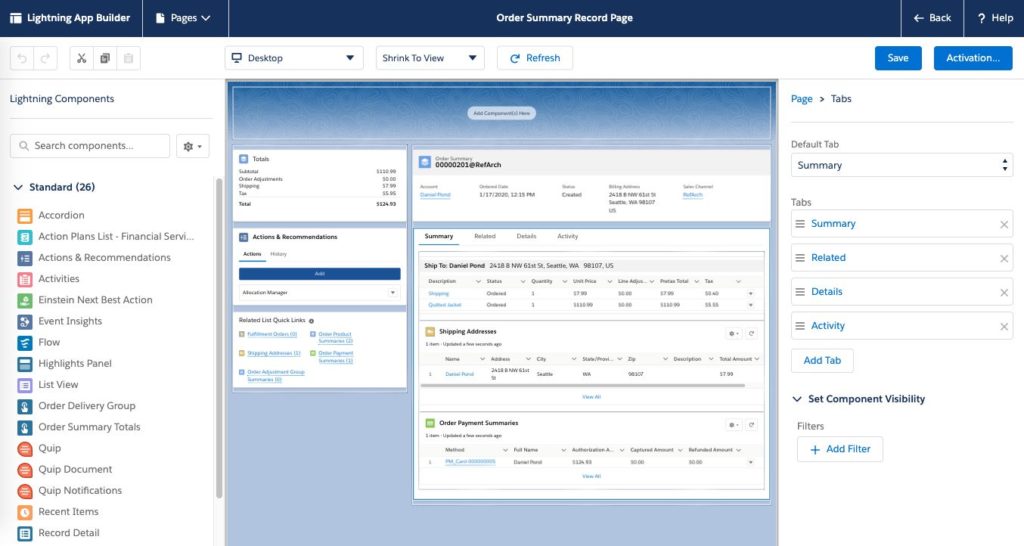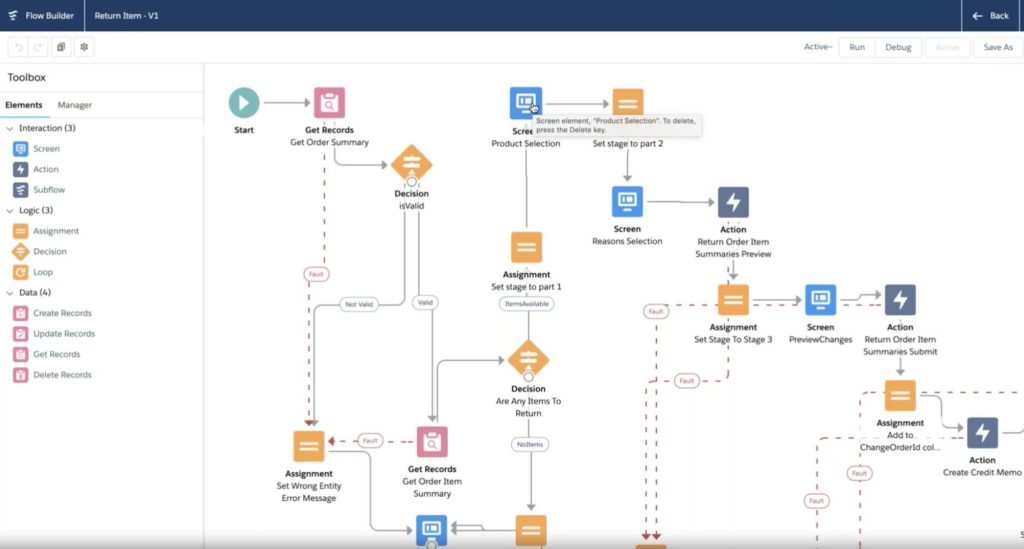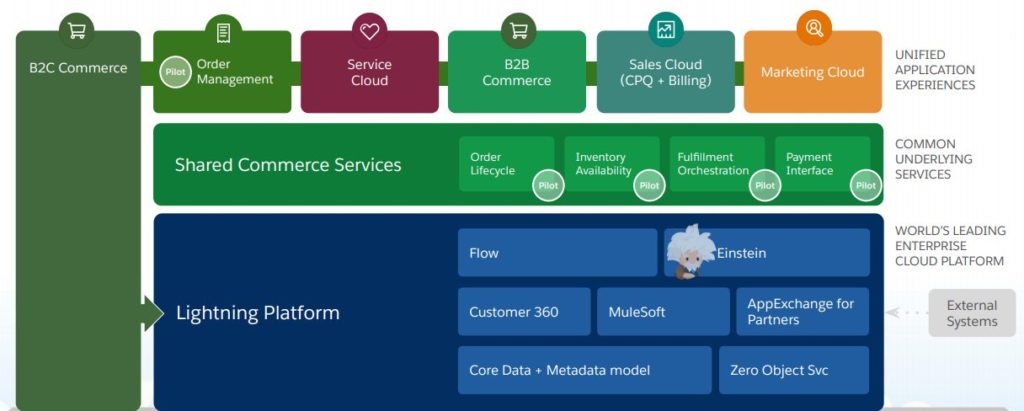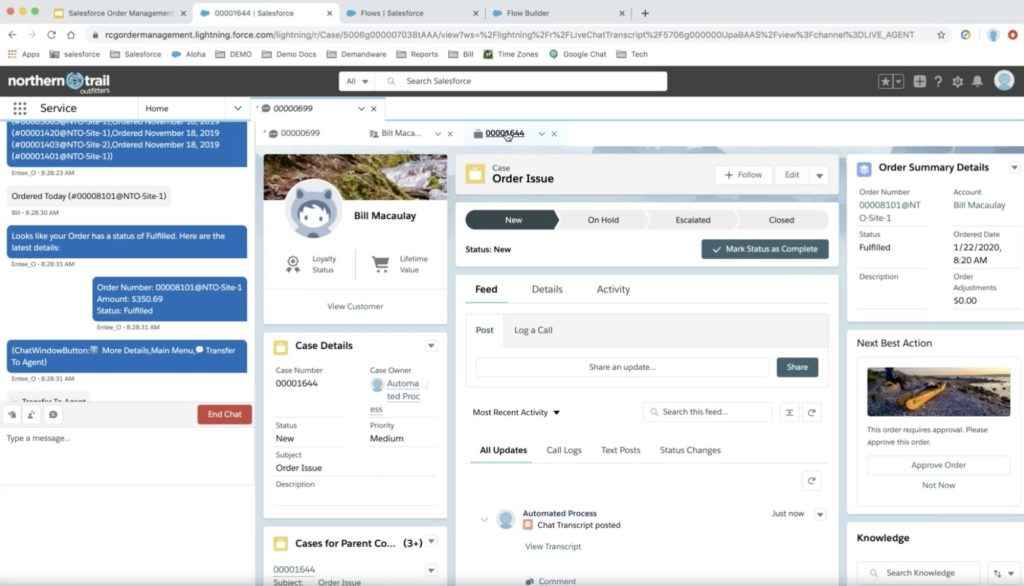Salesforce Order Management, a new order management system (OMS) built directly on the Salesforce platform, can act independently as a standalone OMS or be deployed alongside any number of complementary cloud products from Salesforce.
It fits nicely alongside Salesforce Service Cloud, making it possible for agents to access OMS data and interfaces along with customer’s service-case, loyalty, and profile data. Curious to know more? Here are three key points to understand about this robust new offering
1. OMS on the Salesforce Platform Provides High Performance, and More
Salesforce has spent 21 years building cloud software, moving from CRM to a customer-centric platform that handles the needs of both small and enterprise-scale businesses. Building its new order management product on this tried-and-true SaaS platform means that Salesforce OMS customers get a slew of benefits:
- High performance and reliability. Salesforce prides itself on its availability and uptime and is transparent about it on status.salesforce.com.
- Robust partner and third-party party ecosystem with AppExchange. One of the most beneficial aspects of Salesforce is its extensive “app store” for business apps (appexchange.salesforce.com). Need a payment provider? Esignature? Integrations with ERP and accounting software? Apps for these purposes and more are available in the AppExchange. The Salesforce OMS is launching with integration partners including Adyen, Cybersource, Avalara, UPS, and DHL.
- Ease and flexibility of customization. Users can customize both user experience and business logic via a combination of declarative tools and settings (“clicks not code”)—and can further enhance those elements by using Apex code and Lightning Web Components from Salesforce.
Salesforce Order Management takes the pattern that many other Salesforce products—including Field Service Lightning and Salesforce CPQ—have taken from a product strategy perspective and it gains the benefit of the platform straightaway. It’s easy to see how this can benefit an implementation immediately and give customers an advantage.
- The Salesforce OMS interface utilizes the Lightning interface. Lightning apps, customizable list views, and detailed record views give you a powerful way to browse orders, fulfillments, and related data with ease. Pre-existing Salesforce platform user interfaces have been modified to show OMS data that works seamlessly and is easy to incorporate into your existing interface and applications. With the Salesforce Lightning App Builder, the system is customizable and tweakable for your different users (see Figure 1).

- The Salesforce OMS uses Flow Designer and Process Builder. Salesforce prides itself on its “clicks not code” ability for declaratively customizing the interface, business logic, and even integrations with other systems. This makes it possible for you to innovate faster and get your ideas built out while minimizing effort and technical debt. One example of how the OMS uses this concept is in how it takes advantage of Salesforce Cloud Flow Designer to allow you to visually build fulfillment and return processes on a canvas (see Figure 2). Need a “grace period” before orders go to the warehouse? Add a 15-minute “wait” step on the canvas before the fulfillment request is issued. Done.

2. The Salesforce OMS Fits with the Salesforce Customer 360 Vision
Companies increasingly are joining the cross-cloud revolution, determined to gain the benefits of a single view of their customers and unify data across multiple fragmented silos. We see companies turning to Salesforce Sales Cloud or Salesforce Customer 360 as a customer data platform, Salesforce Service Cloud for customer service, and Salesforce Marketing Cloud to power customer journeys and communication. The Salesforce OMS allows the order data to fall into place where it belongs: next to the consumer data that already exists in the Salesforce platform.
- Avoid cross-platform integrations and middleware and keep data centralized and accessible. Now you can build out rich experiences on the Lightning platform without having to worry about marshaling data to yet another system. Executives and finance can get views of their data, service agents can view recent orders and customer history, and marketers can build campaigns and journeys, with Salesforce’s advanced profile and sharing model ensuring people have access only to the data they need.
- Use communities to surface data to your customers. Build loyalty programs, support portals, or any app imaginable and share it with your customers via Salesforce Community Cloud, which lets you empower your customers with a cutting-edge brand experience and avoid calls to your support center.

3. Salesforce Order Management Is Deeply Integrated with Salesforce Service Cloud
The point at which your customer clicks the Complete Order button is only the beginning of a complex journey that ends with that customer opening a package delivered to the door. Salesforce Order Management brings a new level of high-touch customer service to the fulfillment process that allows your business to help customers get the information they need quickly and efficiently. Although the OMS and Salesforce Service Cloud are two separate products, they are essentially intertwined interfaces that can be used in one streamlined fashion. The data for the customers, service cases, chat transcripts, and OMS-related objects are all stored in the same database, so they can be surfaced for agents easily, providing the data and productivity tools necessary for a streamlined customer service experience (see Figure 3).

With Salesforce Service Cloud, you get many features, such as Salesforce Live Agent (live chat), that can be snapped into your sites. Add Salesforce Einstein chatbots to the chat experience and customers can ask a bot, “Where is my order?” and obtain an accurate status update. With Salesforce Communities, you might allow customers to log in to their personal portal and view their current and historical order data and support cases.
With the advent of OMS on Salesforce, Astound is well equipped to help you tackle your implementation of this new product. With certified professionals in Salesforce B2C Commerce, Service Cloud, Marketing Cloud, and many other products, we take your vision for a 360 view of your customer and make it a reality. Get in touch today.
